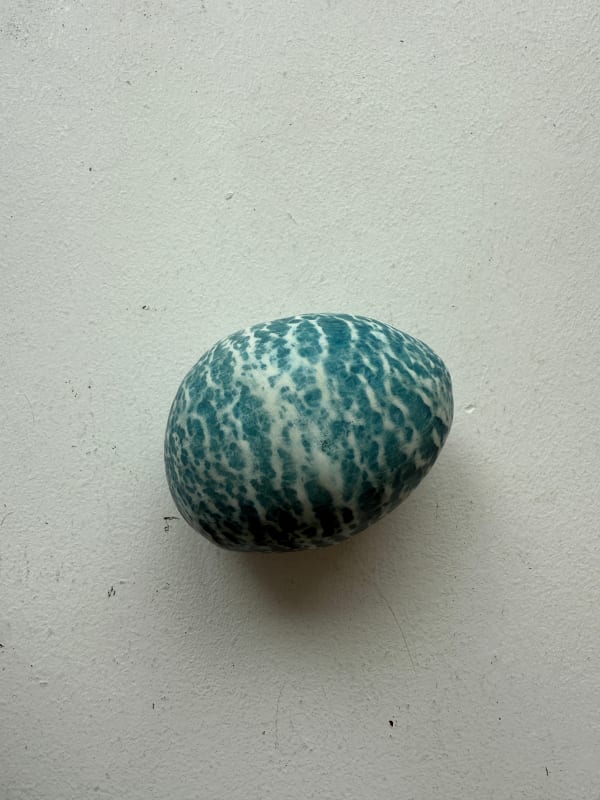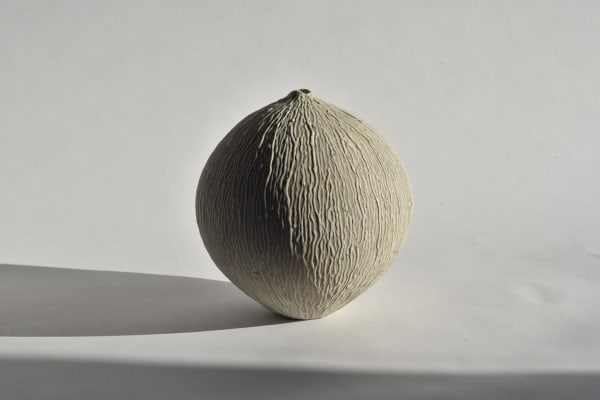In This Guide:
The transformation is nothing short of magical: humble clay shaped by human hands, then forever changed by fire into something permanent and beautiful. When you hold a ceramic vessel, you're touching earth that has been transmuted through one of humanity's oldest arts, yet contemporary ceramic artists continue pushing boundaries, creating works that challenge traditional distinctions between craft and fine art.
For many gallery visitors, ceramics can seem mysterious. What makes a ceramic piece fine art rather than functional pottery? How do different techniques affect the final result? The variety of ceramic techniques and the distinction between craft and fine art can feel confusing for those new to this ancient yet evolving medium.
This guide demystifies ceramics as an art form, helping you understand the techniques, materials, and traditions that shape contemporary ceramic practice. By learning to appreciate the craftsmanship and artistry behind ceramic works, you'll develop confidence to engage with these tactile, fire-born creations on a deeper level.
Whether you're drawn to the earthy appeal of stoneware or the refined elegance of porcelain, this collector's guide will enhance your understanding of ceramics as both ancient craft and contemporary art.
-
-
 Janene WaudbyCeramicMedium Blue & Green Smokefired BottleHeight: 20 cm
Janene WaudbyCeramicMedium Blue & Green Smokefired BottleHeight: 20 cm
Widest part: 10 cm -
Ceramic Techniques & Materials
The technical foundation of ceramics art encompasses three fundamental processes: forming, glazing, and firing. Each stage offers creative possibilities that influence the final artwork's character.
Hand-Building Techniques
Hand-building represents ceramics' most ancient and versatile forming method, allowing infinite creative possibilities unconstrained by the wheel's rotational limitations. This direct manipulation of clay creates intimate connection between maker and material.
Pinching forms vessels through rhythmic pressure, gradually thinning and shaping clay walls. This meditative technique produces organic, slightly irregular forms that celebrate the hand's natural movement.
Coiling builds forms by stacking rope-like clay coils, then smoothing joints to create continuous walls. This ancient technique allows construction of large, complex forms impossible on potter's wheels.
Slab construction involves rolling flat clay sheets, then cutting and joining them. This architectural approach enables geometric forms and sculptural works with flat planes and sharp edges.
Wheel-Throwing Techniques
Wheel-throwing creates forms through centrifugal force and hand pressure, producing characteristically smooth, symmetrical vessels. The potter's wheel demands coordination of breath, posture, and hand movement, creating a meditative dialogue between maker and spinning clay.
Thrown forms exhibit particular qualities: smooth curves, even wall thickness, and subtle spiral lines recording the maker's touch. Many contemporary ceramicists use throwing as one tool among many, combining wheel-thrown elements with hand-built additions.
Stoneware Ceramics
Stoneware represents ceramics' workhouse: durable, versatile clay bodies that fire to high temperatures. Stoneware's earthy character and forgiving nature make it popular among both functional potters and sculptural artists.
Stoneware clays typically contain iron and other minerals that impart natural colour ranging from buff to brown. These impurities create visual interest through speckles and colour variations that interact beautifully with glazes.
Firing temperatures for stoneware range from 1200°C to 1300°C, creating strong, durable ceramic with stone-like density. Stoneware's robust character suits both architectural ceramics and intimate vessels.
Porcelain Ceramics
Porcelain represents ceramics' aristocrat: refined, white clay that fires to translucent hardness. Porcelain's purity and technical demands have made it synonymous with ceramic excellence for over a thousand years.
True porcelain contains high percentages of kaolin, a pure white clay that imparts porcelain's characteristic colour and working properties. Kaolin's lack of plasticity makes porcelain challenging to work, requiring patience and skill.
Porcelain fires at very high temperatures, typically 1280°C to 1400°C, creating complete vitrification. This produces porcelain's distinctive ring when struck and its partial translucency when made thin.
-
 Judith Davies
Judith Davies -
How To Appreciate Ceramics Art
Developing appreciation for ceramic art involves understanding both technical achievements and artistic intentions. Unlike paintings viewed from distance, ceramics invite closer examination of surface, form, and the evidence of making processes.
Begin by observing the overall form and proportions. Notice how the piece sits in space, whether it feels balanced or deliberately unstable. Good ceramic form often exhibits subtle tensions that create visual interest.
Examine surface treatments closely. Glazed pieces reveal their character through colour depth, texture, and how glaze breaks over edges. Notice whether glazes appear even or deliberately varied, smooth or textured.
Look for evidence of making processes. Thrown pieces might show subtle spiral lines, whilst hand-built works often retain fingerprints or tool marks. These marks connect viewers to the artist's physical engagement with the material.
Trust your tactile responses whilst respecting display protocols. Ceramics naturally invite touch, though museum etiquette requires visual appreciation only. Imagine how pieces might feel: smooth or rough, heavy or light.
Read our article on how to choose art for your home
-
Works By The Artists In This Article
-
Understanding Ceramics
Understanding ceramics art enhances appreciation for one of humanity's most enduring creative mediums. Whether drawn to porcelain's refined elegance or stoneware's earthy directness, developing knowledge of ceramic techniques enriches every encounter with these fire-born creations.
Contemporary ceramic art demonstrates how ancient techniques can serve entirely modern artistic visions. Remember that ceramic appreciation develops through exposure and experience.
For those interested in exploring other art forms, discover our guides to sculpture art, painting art, and print art.
Explore our complete ceramics collection
Frequently Asked Questions
What are the three types of ceramics?
The three main ceramic types are earthenware (low-fired, porous clay), stoneware (high-fired, durable clay), and porcelain (high-fired, pure white clay that becomes translucent). Each has distinct characteristics affecting appearance and artistic possibilities.
Are ceramic art and pottery the same?
While related, they differ in primary purpose. Pottery focuses on functional vessels, whilst ceramic art prioritises aesthetic expression. Many contemporary works blur these boundaries, creating pieces that suggest function whilst serving primarily as art objects.
Why is ceramic art so expensive?
Ceramic art pricing reflects technical difficulty, time investment, and firing risks. The process requires years to master, and glazes often result from extensive experimentation. Unique pieces command higher prices than mass-produced items.
How to check ceramic quality?
Quality ceramics exhibit even wall thickness, clean edges, and surfaces free from cracks. Properly fired pieces feel solid, with glazes that enhance underlying forms. Listen for clear ringing when gently tapped.
How do you care for ceramics?
Handle with clean hands, supporting from underneath. Dust regularly with soft cloths. Clean glazed surfaces with slightly damp cloths if needed, but avoid soaking unglazed areas. Display on stable surfaces away from traffic.
How do you clean ceramic art?
For routine care, dust with soft brushes. Glazed pieces can be cleaned with barely damp cloths, but avoid harsh chemicals. For valuable pieces, consult conservation professionals for cleaning beyond dusting.
Read our complete guide on how to care for artwork
Related Resources:
This guide was co-created in collaboration with Emile Haffmans of Art World Marketing and Finn Theunis of Orys in order to provide comprehensive and practical advice for understanding art forms and mediums.






